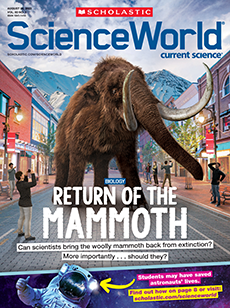This summer, millions of people will flock to amusement parks, seeking the latest thrills. Engineers at Six Flags theme parks have been working hard to ramp up the excitement. Last season, they launched a gravity-defying ride that twists and spins in three directions at once. To top that, this year they’re introducing two new record-breaking attractions: a high-speed roller coaster and a swinging pendulum that sends riders soaring high in the air.
Engineers who design these over-the-top rides need a big imagination and in-depth knowledge of physics to deliver new experiences that are both safe and exhilarating (see Fastest, Tallest, Twistiest). Here’s how they combined creativity and science to make three of the most stomach-dropping, heart-pounding, scream-inducing rides yet.
This summer, millions of people will head to amusement parks to seek the latest thrills. Engineers at Six Flags theme parks have been working hard to raise the excitement. Last season, they built a ride that seems to defy gravity. It twists and spins in three directions at once. This year, they’re topping that with two new record-breaking attractions. One is a high-speed roller coaster. The other is a pendulum that swings riders high in the air.
To design these extreme rides, engineers need a big imagination and a deep knowledge of physics. The new rides must be both safe and exciting (see Fastest, Tallest, Twistiest). Here’s how engineers combined imagination and science to make three of the wildest rides yet. These stomach-dropping, heart-pounding rides will have you screaming more than ever.

